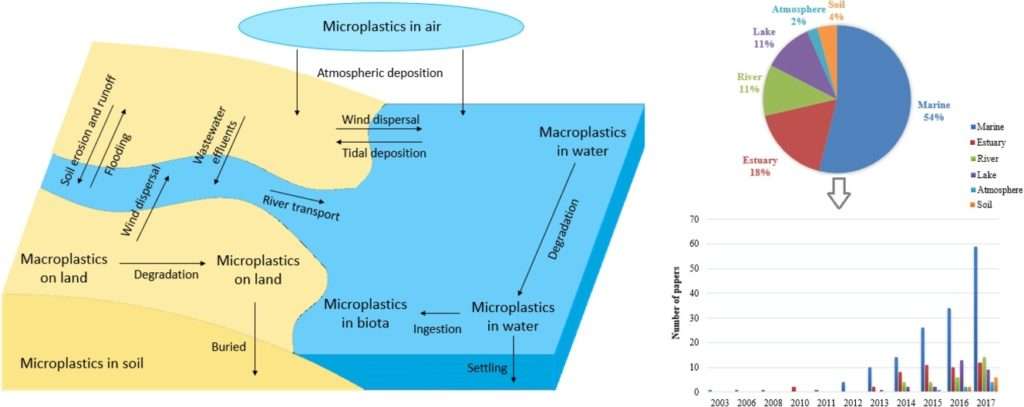Introduction:
With our plastic way of life, the beautiful oceans, seas, estuaries, rivers, lakes, soil and atmosphere are polluted with plastic debris. These plastic debris or plastic wastage come from different materials and are in different sizes. Micro plastics are any plastic waste which is less than 5mm (milimetres) in length. Their impact on health is significant. As many of you know plastics take about 500 to 1000 years to bio degrade. As such, these micro plastics also take a minimum of 500 years to degrade so once consumed they remain in your body for a very long time.
In 2019, there was a scientific literature review conducted on micro plastics pollution on seas, estuaries, rivers, lakes, soil and atmosphere. More than 200 papers on the Web of Science database, published between 2006 and 2018, were reviewed. It was then noted that further work needs to be undertaken before we have exact information about the amount of micro plastics that are released into the environment.

Where do these micro plastics come from though?
Sadly they come from you and me, the human. Plastics and micro plastics were introduced by us. Micro plastics come from our consumables and habits. One more reason we have to be careful about our behavior.
Micro beads are a type of micro plastic. They are extremely small pieces of manufactured polyethylene plastic. Unfortunately many of the exfoliators and health and skincare products such as cleansers and toothpastes have these.2 Now do you understand why Go Eco Love is so into natural skincare?! Can you imagine what you are putting on your skin? There is a whole series of skin care education tips on Go Eco Love about what to watch out for when you buy skin care products.
Anyways, these micro plastics easily pass through water filtration systems and end up in the ocean and Lakes because of the fact they are so tiny. So what do you think is the end result? They end up back into our body! An example is the sea salts we intake – they get back into our body through things we ingest. Once they are back into our body, they cause multiple health issues resulting in endocrine deficiencies and stomach problems. They are also very harmful to aquatic life.
Upon ingesting these, synthetic particles smaller than 150 μm can enter the gastroinstinal system. Scientists speculate that 0.3% of these particles should be absorbed and particles bigger than 10 µm can even pass through the blood–brain barrier and placenta with potential consequences to an unborn child. 3 These digested particles result in toxicity and inflammation to your stomach. See below image on all the harms to our body.

Let me tell you a real story! Recently we were on a trip to Cuba, sailing away on a catamaran. Whilst we were all enjoying themselves under the scorching sun, the bartender served everyone a pack of snacks which had sandwich, few nuts and biscuits. These came in plastic wrapping. We were also given plastic cups for our drinks and there was an announcement to put all our rubbish into the bins.
Many were out, lying on the netting of the catamaran enjoying the beautiful sun, seeing the sparking water with the air blowing on our faces. However, right in front of us, we saw many families and children throwing their waste through the netting of the catamaran. As soon as the adult in the family started doing this, the children followed. How sad is this? When will people ever learn? This is why we at Go Eco Love are passionate about education and awareness.

We believe the more we keep educating and repeating about conscientious behavior, people will change. The change has to be in the way you think. It has to be in your attitude. Let’s all join together and make a positive impact on the environment.
REFERENCES:
1Akdogan Z, Basak Guven B. (2019) Microplastics in the environment: A critical review of current understanding and identification of future research needs. Environmental Pollution, Volume 254, Part A, 113011
2The National Ocean Service, National Oceanic and Atmospheric Administration, U.S. Department of Commerce
3 Barboza LGA, Vethaak DA, Lavorante BRBO, Lundebye AK, Guilhermino L. (2018) Marine microplastic debris: An emerging issue for food security, food safety and human health. Mar Pollut Bull.133:336-348.

